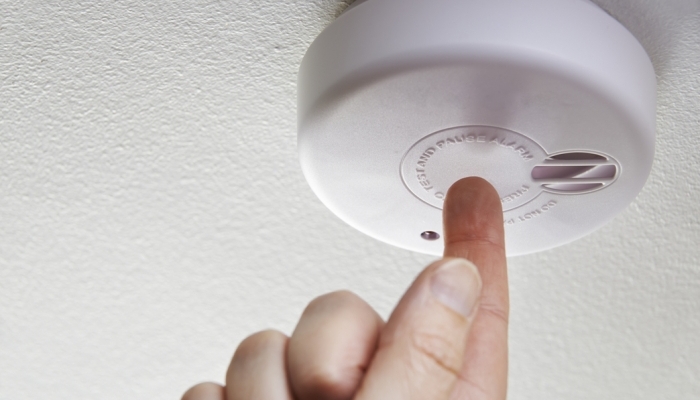
Smoke alarms are one of the most vital safety devices in any home or building, serving as the first line of defense against fires. However, having a smoke alarm isn’t enough—it must be properly maintained to ensure it functions when needed most. Regular maintenance can mean the difference between life and death, making it crucial for homeowners and tenants alike to take smoke alarm upkeep seriously.
Why Smoke Alarm Maintenance Matters
A properly functioning smoke alarm provides early warning, giving occupants the time they need to escape safely in the event of a fire. According to the National Fire Protection Association (NFPA), the risk of dying in a home fire is cut in half when working smoke alarms are present. However, alarms that are neglected—whether due to dead batteries, dust buildup, or other malfunctions—can fail when they’re needed most.
Key Smoke Alarm Maintenance Tasks
To keep smoke alarms in optimal working condition, follow these essential maintenance steps:
1. Test Monthly
Most smoke alarms come with a “test” button that allows you to check if the device is operational. Press and hold the button until you hear the alarm sound. If the alarm doesn’t activate, troubleshoot by checking the power source and replacing the battery if necessary.
2. Replace Batteries Regularly
For battery-operated smoke alarms, change the batteries at least once a year or whenever the low-battery warning chirps. If you have a hardwired smoke alarm with a backup battery, it’s still essential to replace the battery periodically. Consider changing batteries during daylight saving time changes as a reminder.
3. Clean to Prevent False Alarms
Dust, dirt, and cobwebs can accumulate inside the smoke alarm, leading to false alarms or failure to detect smoke. Clean your smoke alarms monthly by gently vacuuming around the vents with a soft brush attachment or wiping them with a dry cloth.
4. Check the Expiration Date
Smoke alarms have a limited lifespan, typically around 10 years. Check the manufacturing date on the back of the alarm and replace it if it’s past its recommended service life.
5. Ensure Proper Placement
Regularly check that smoke alarms are installed in the right locations. Alarms should be placed inside and outside sleeping areas and on every level of the home. Avoid placing them near kitchens or bathrooms, where steam and cooking fumes could trigger false alarms.
The Bottom Line
A working smoke alarm is a lifesaving device, but it requires regular maintenance to function effectively. By testing alarms monthly, replacing batteries as needed, keeping them clean, and ensuring they’re up to date, you can significantly reduce the risk of fire-related tragedies in your home. Stay proactive about smoke alarm maintenance—your safety depends on it.
Would you like to add any specific details, such as local fire safety regulations or recommended brands?
Glasshouse Home Safety Smoke Alarms: Your Partner in Compliance
Glasshouse Home Safety Smoke Alarms, with their expertise in smoke alarm installations and testing, are well-equipped to assist homeowners in navigating these regulatory changes. By staying up-to-date with the latest requirements, they ensure that the homes of their clients in Queensland are equipped with effective and compliant smoke alarm systems.
If you have any questions or require additional information regarding the recent amendments to the wiring rules and the implications for smoke alarm installations and testing, do not hesitate to contact Glasshouse Home Safety Smoke Alarms at 1300 856 263. We are committed to providing reliable and professional services to enhance home safety in Queensland.





